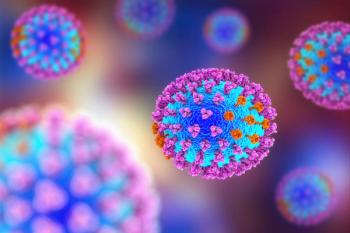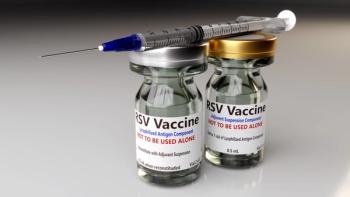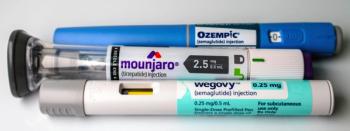
Review Highlights Progress, Challenges With CRS in Cancer Immunotherapies
A new review outlines strategies that may help reduce the risk of severe cytokine release syndrome (CRS) for patients treated with immunotherapy.
While immunotherapy has become a potent force in the fight against cancer, it can also lead to serious adverse effects like cytokine release syndrome (CRS). In a review published in
The authors began by explaining the history of CRS, the phenomenon that occurs when the immune system rapidly releases a large amount of cytokines. The first instance of CRS in the scientific literature, they said, came in the early 1990s in relation to the anti-T cell antibody muromonab-CD3 (OKT3), which was used as an immunosuppressant for patients undergoing organ transplants.
In the past 3 decades, though, CRS has been seen in patients with illnesses as varied as influenza, coronavirus disease 2019, and graft-versus-host disease. CRS has also been linked with targeted immunotherapies like immune checkpoint inhibitors, bispecific T-cell engagers, and chimeric antigen receptor (CAR) T cells, they said.
Shah and colleagues said there are differences in CRS depending on the cause; "the cytokines triggered by a viral infection are different from those released during cancer immunotherapy. However, the symptoms of CRS across diseases have common features and generally result in organ/system damage and lung, liver, or kidney dysfunction,” they said. CRS can be fatal, they added.
The authors then detailed the research related to CRS in cancer immunotherapy. For instance, a number of studies have looked at factors associated with CRS severity in patients receiving CAR T cells. One study, they noted, found that patients with lower tumor burdens tended to have less severe cases of CRS.
“Besides this trial, several other studies have assessed the factors/biomarkers associated with occurrence of severe CRS which include pre-treatment tumor burden, CAR T-cell dose, CD4/CD8 CAR-T cell ratio, peak CAR-T cell in vivo expansion, and the measurement of serum cytokine levels at specific timepoints post–CAR T infusion,” they wrote.
CRS is less common with bispecific T-cell engagers, Shah and colleagues said.
“Due to its short half-life, the bispecific T-cell engager treatment can be discontinued if needed without severe outcomes,” they said.
Similarly to CAR T cells, the investigators said tumor burden and the initial dose of the therapy have been linked with CRS risk in patients receiving bispecific T-cell engagers.
The authors said management of CRS has improved over the years. They said the use of tocilizumab and corticosteroids can help reduce risk, though they said additional interventions are needed. In addition, they suggested that screening patients’ cytokine profiles could also help reduce risk by helping physicians better understand an individual patient’s risk of developing severe CRS.
Shah and colleagues said novel classes of CAR T cells and bispecific T-cell engagers have been developed with modifications designed in part to minimize CRS toxicity.
“Other approaches to reduce CRS toxicity include the use of oncolytic viruses and dendritic cell vaccines for cancer immunotherapy,” they said.
In addition, they said researchers also looking at ways to use other immune cells are CAR therapy, which they said might ultimately yield a safer type of therapy.
“The other major benefit is that these therapies can be made available ‘off-the-shelf’ in an allogeneic setting eliminating the manufacturing wait time,” they noted. Less manufacturing time would mean a lower cost, and the use of healthy donor cells may lead to more potent therapies, they said.
Reference
Shah D, Soper B, Shopland L. Cytokine release syndrome and cancer immunotherapies - historical challenges and promising futures. Front Immunol. 2023;14:1190379. Published 2023 May 25. doi:10.3389/fimmu.2023.1190379
Newsletter
Stay ahead of policy, cost, and value—subscribe to AJMC for expert insights at the intersection of clinical care and health economics.














































